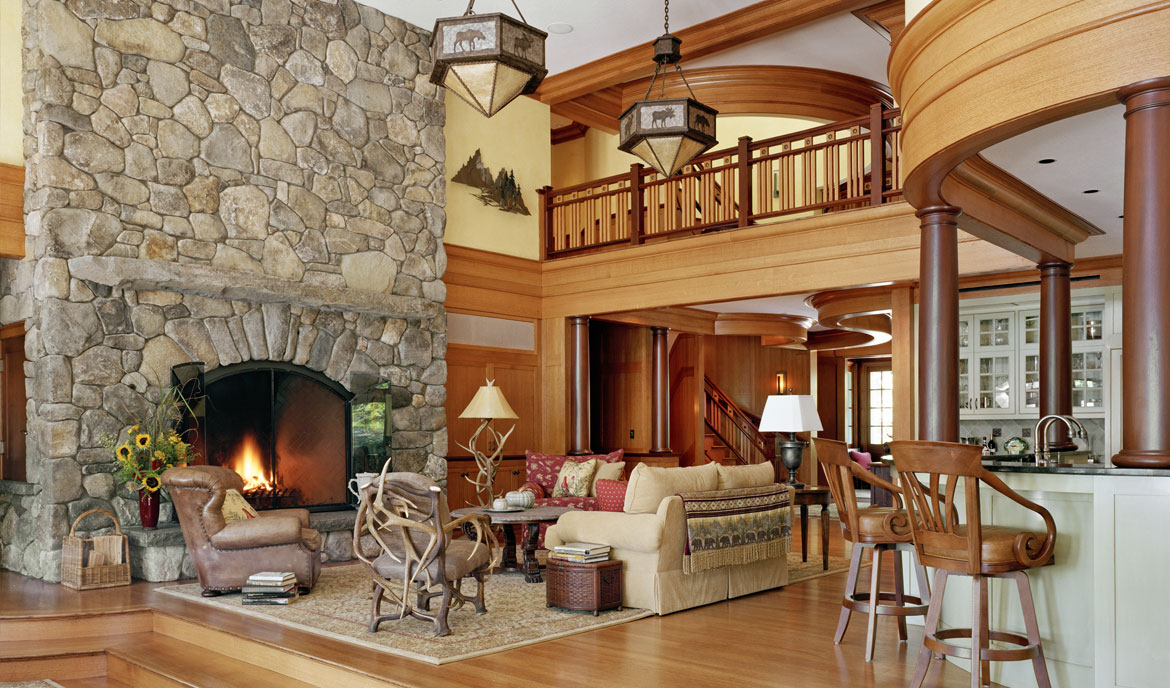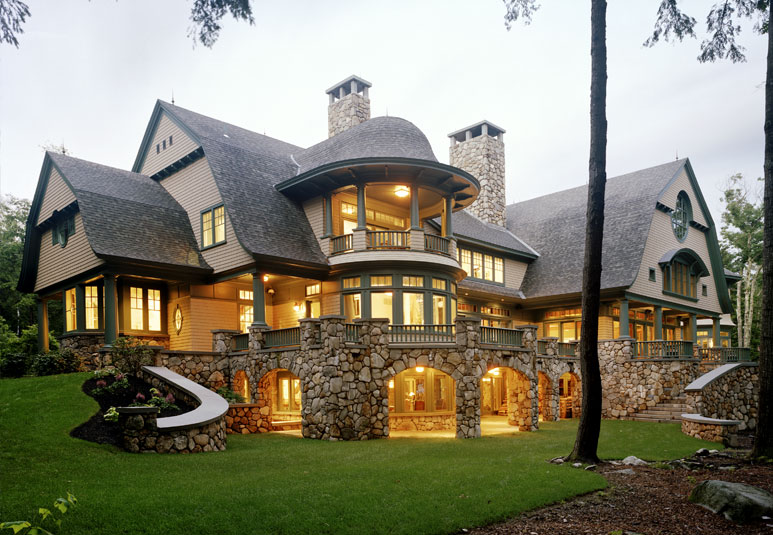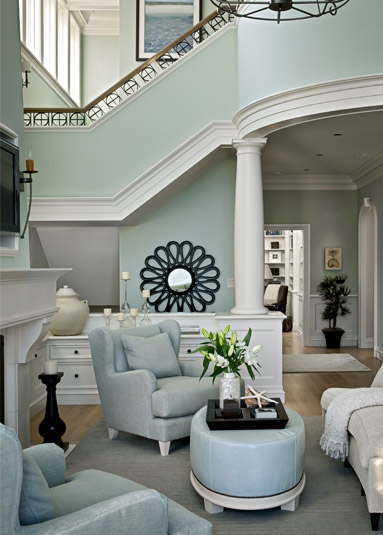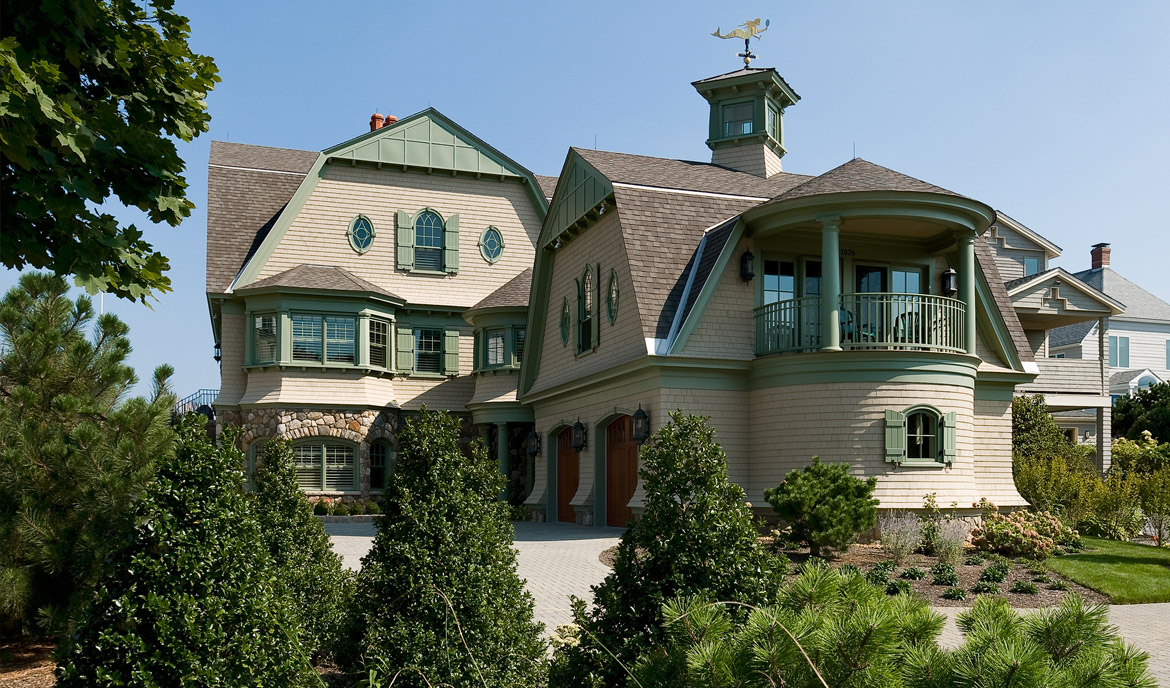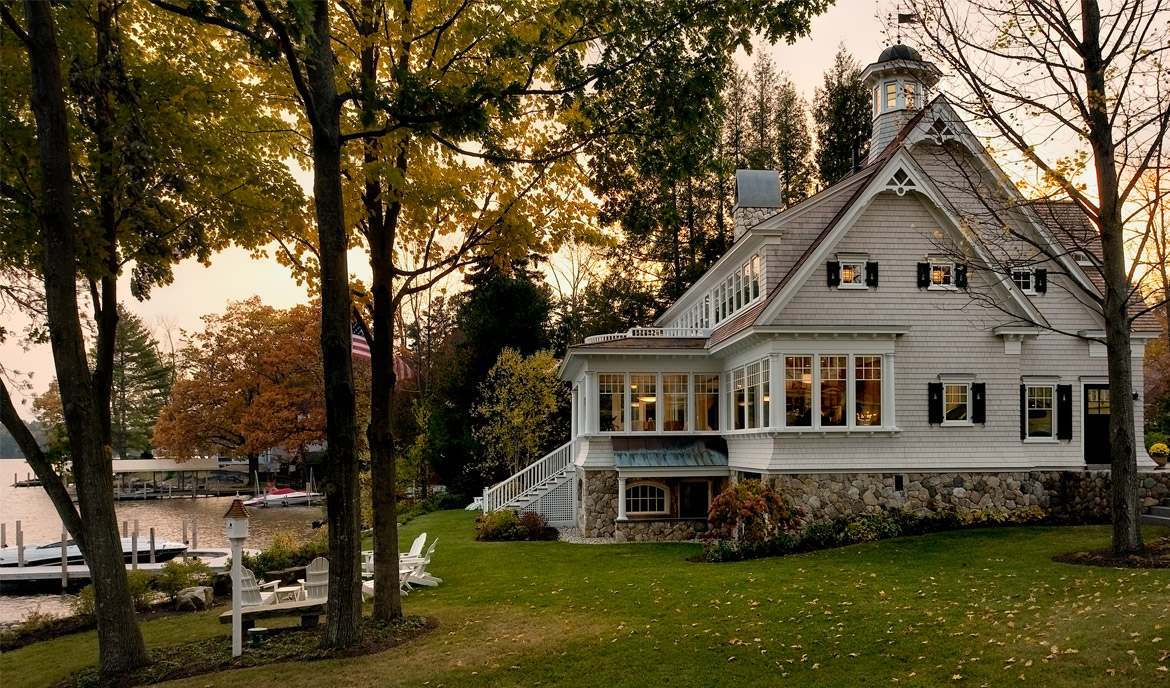Historic Summer Homes
Summer from the July 4th onward becomes a celebration and consideration of everything that makes America great, and of everything that makes such greatness stand so tall. Whether it’s the barbeques or the fireworks, the parades or the military bands, it’s never hard to find something patriotic during the summer — particularly in New England. But it isn’t the loud festivities that define a nation, or even its remarkable history. It’s the innovation those festivities raucously represent, and the history that influences us to this day. If there’s any element of the United States that exhibits a nation dedicated to ingenuity and prideful of past, it’s within our physical foundation: our architecture. And there’s no form more beloved and more copied the world over than that of the American waterfront summer home. While the original mountain, lake, and sea abodes may be beyond a century old in age and design, the influence of traditional summer homes over contemporary choices in any kind of space are a living piece of history as classic and unique as any monument.
Though summer houses may feel as old a cultural habit as the Constitution, there was really one era — and one man — that made it a national trait. Designers may love the phrase “bringing the outdoors in,” but it never would have existed were it not for the efforts and indomitable personality of a single person: Theodore Roosevelt. Considered a sensational war hero, Teddy Roosevelt was an outdoorsman like no other, and even before his creation of the National Parks system as President, he had achieved remarkable acclaim and popularized time spent actively in nature. Sagamore Hill was finished in 1886 and became his permanent residency, but was built on the water initially for the warmest months in a Queen Anne style, while the interior came to represent all we think of in the cultural zeitgeist of a man who once gave a speech after having been shot in a failed assassination attempt. With vaulted ceilings balancing the warm glow of deep finishes, the earthy natural stone fireplace contrasted with the primal delicacy of big game ivory, this study couldn’t be better suited to its scholar – and the same details are still thriving in its contemporary lakeside manor counterpart.
Maine is dubbed ‘Vacationland’ for a reason, and with summer homes like The Norumbega it’s easy to see why. In a departure from the detailed wooden Adirondack mountain lodges and sweeping Arts and Crafts style of the Victorian summer home, The Norumbega took its inspiration from another set of favorite American traits while combining those others: travel and adventure. Towards the end of the 19th century, it became a rite of passage for any young, wealthy American to trip throughout Europe, return, and incorporate their experiences into the cultural vestment of their own young country. As the United States looked towards its future in expanding west, it also looked to learn from its past roots in Europe, particularly in overcoming adversity while recovering from the Civil War. The inventor of the duplex telegraph, Joseph Stearns, sold his invention to Western Union and left to see Europe; on his return, he built The Norumbega in 1886 at the foot of Mt. Battie between Megunticook Lake and overlooking the Penobscot Bay in Camden, Maine. Vividly inspired by the castles he saw overseas, the stately structure still incorporated contemporary influences of the time, particularly in use of local natural stone, shingling, and picturesque window and balcony details — all elements still melded into our own modern work.
While the above home may seem as if it couldn’t be more different from its counterparts, its origin is strikingly similar to The Norumbega. Though The Mount was built in 1902, it was also deeply influenced by experiences in Europe like Stearns’ Maine castle, and by its surrounding natural locale like Sagamore Hill. There is one striking difference, however: The Mount’s owner was a designer in her own right, having written The Decoration of Houses. However, this isn’t the book for which she would be most famous. Edith Wharton would become a pillar of American literature for novels including The Age of Innocence, The House of Mirth, and The Buccaneers, earning her three separate nominations for the Nobel Prize. Although her eye for design often goes forgotten in light of her other remarkable accomplishments, it truly shines in her country home in Lenox, Massachusetts. Inspired by 17th century villas by Lake Como in Italy, Wharton took care to meld those lighter tastes with the contemporary and classic American aesthetics of summer in New England. Much like Teddy Roosevelt’s study, this space incorporates a soaring ceiling with grounded materials, natural color tones, luxuriously comfortable furnishings, and latticework detailing. Though a contrast to some other summer homes of the time, The Mount was not truly unusual in choosing lighter, airier elements in keeping with earlier Victorian homes with their rounded lines and heightened grandeur – elements still incorporated into waterfront homes today.
Though similar in style to Sagamore Hill and in substance to The Norumbega, this house might be the most ultimately Americana home for an entirely different reason: it was not only the home of Mark Twain, but where he wrote all of his most famous works, including Huckleberry Finn, Tom Sawyer, The Prince and The Pauper, and A Connecticut Yankee in King Arthur’s Court. Completed in 1874 and sheltered by a nook in the Connecticut River in Hartford, its unusual mix of materials and styles make it an architectural landmark in its own right. Technically an example of High Victorian Gothic, Twain biographer Justin Kaplan described it as “part steamboat, part medieval fortress and part cuckoo clock.” Unusual in its pairing of weighty brick, a warren of candy-like wooden spindles, and vibrant patterned paint details, architect Edward Tuckerman Potter deftly created a home in the same wild magnitude of its owner – but when viewed through a slightly tamer lens, the same choices of intricate exteriors, traditional lines, unconventional extensions, and unique details can still be seen in homes built over a century later.
Of course, nothing makes a building a piece of history more than a wild local legend. The Whitehall Inn of Camden, Maine — just down scenic Route 1 from The Norumbega — was originally a simple summer home on the coast nearby a lake. When a young widow tragically lost her husband, she returned to the town of their honeymoon, and was struck by the beauty of the house, purchasing it in 1901 and opening a hotel. From that point forward, it became a resort destination, attracting a range of notables from royalty to movie stars to the President himself — when the poetry of a young local girl who worked there was discovered. Born in nearby Rockland, Edna St. Vincent Millay would go on to be one of the first women to ever be awarded a Pulitzer Prize, and would later return every summer to work from the summer house where she had her start. It isn’t hard to imagine why: with a sprawling wraparound porch, endless windows, low dormers, and exquisite repetition of tactile details, the home remains a classic to this day, and has nearly every design feature still implemented in modern waterfront homes.
This may be a young country, but it’s clear every summer that there is much to cheer and reflect upon — perhaps nothing so much as our history. While the makers of that history may have left us their thoughts and words, it is even more remarkable to see their choices made tangible, left to us within the homes where once they walked. It is a mark of a person to read the sentences they thoughtfully wrote down; it is the person themselves that can still be experienced by knowing the places in which they created and wanted to live. Those marks are left not only on specific homes, but on American architecture itself, then and now, in the future and beyond.

